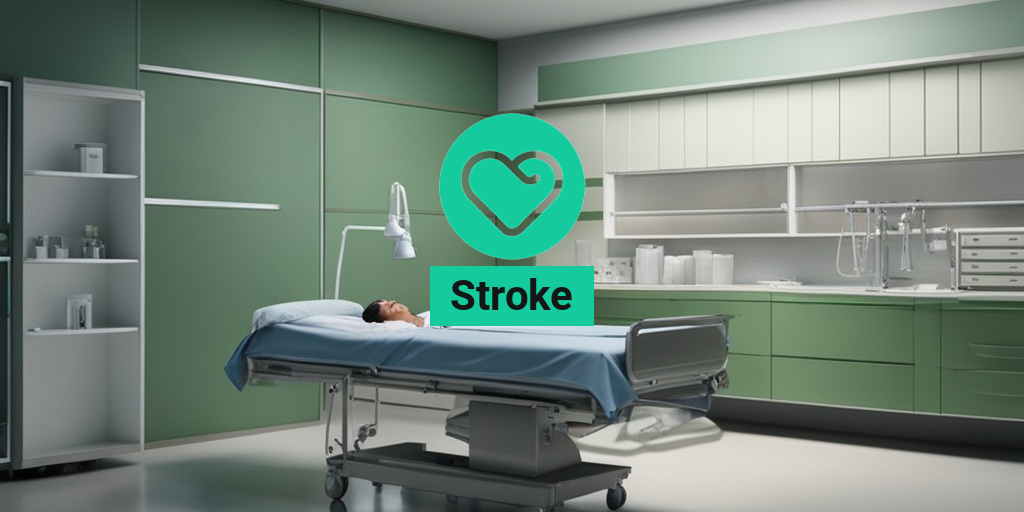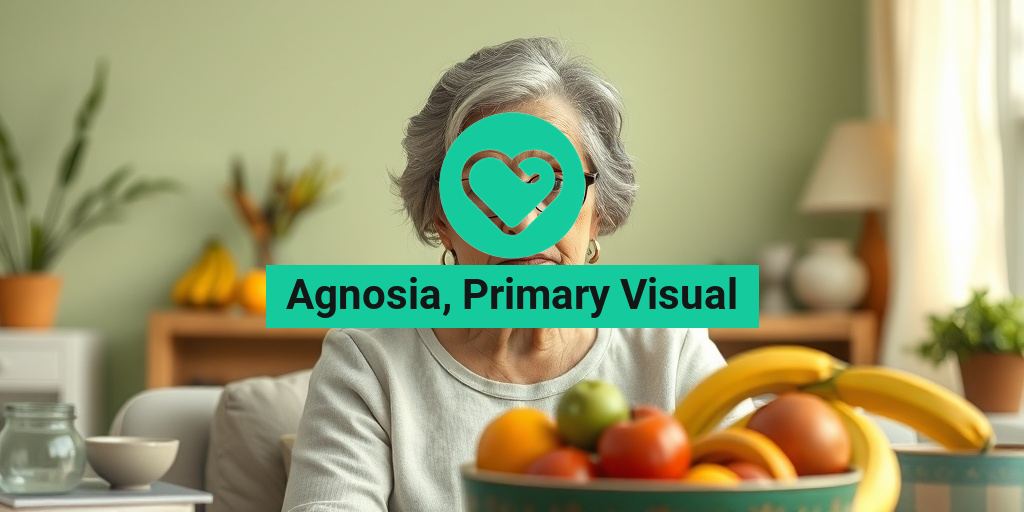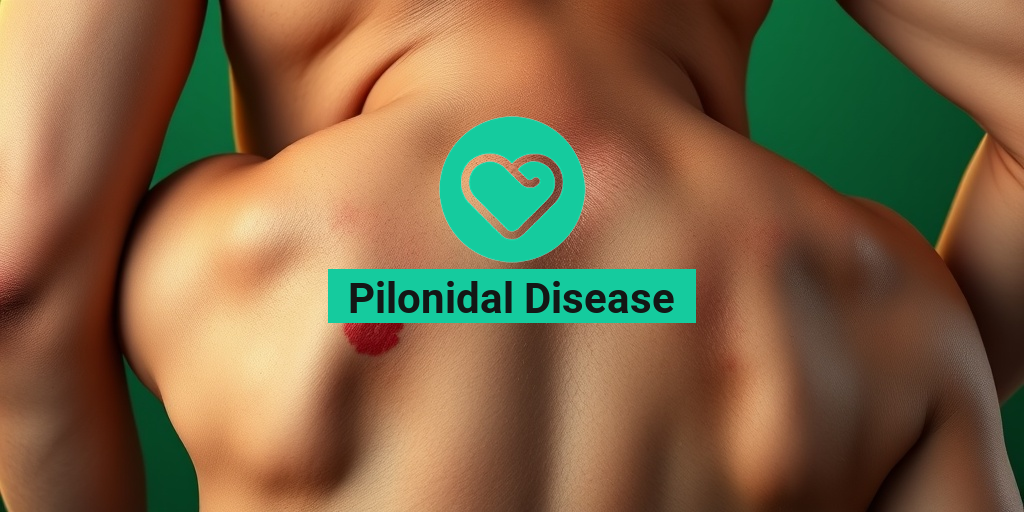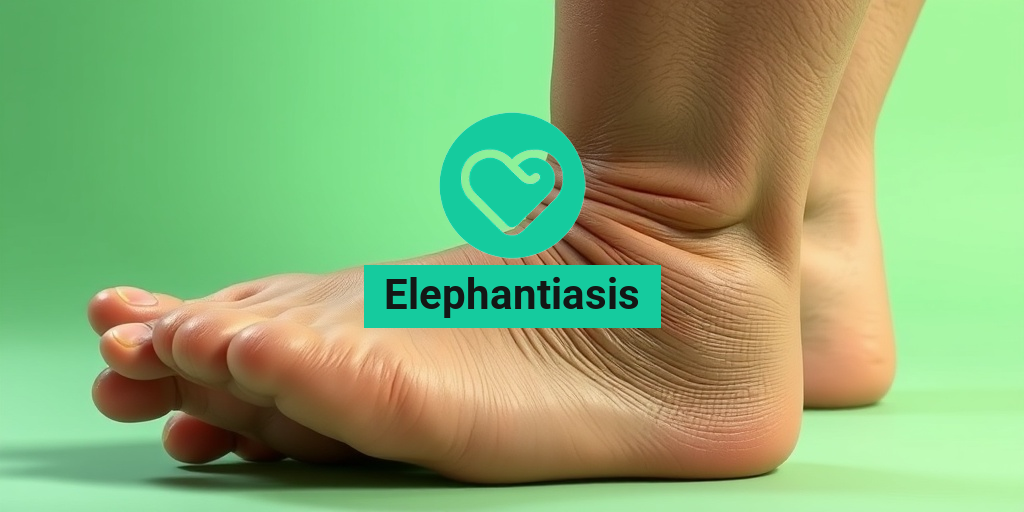What Is a Stroke?
A stroke, also known as a cerebrovascular accident (CVA), occurs when the blood supply to the brain is interrupted, depriving the brain of oxygen and nutrients. This can cause damage to the brain tissue and lead to a range of physical and cognitive impairments. According to the American Heart Association, someone in the United States has a stroke every 40 seconds, making it a leading cause of disability and death worldwide.
What Happens During a Stroke?
During a stroke, the blood flow to the brain is blocked, either due to a blockage (ischemic stroke) or a rupture (hemorrhagic stroke) of the blood vessels. This can cause brain cells to die, leading to a range of symptoms, including:
- Weakness or numbness in the face, arm, or leg
- Difficulty speaking or understanding speech
- Vision problems, including blurred vision or loss of vision
- Severe headache
- Dizziness or loss of balance
If you or someone you know is experiencing these symptoms, it’s essential to act F.A.S.T. and seek medical attention immediately. The acronym F.A.S.T. stands for:
- F – Face: Ask the person to smile. Does one side of their face droop?
- A – Arm: Ask the person to raise both arms. Does one arm drift downward?
- S – Speech: Ask the person to repeat a simple sentence. Is their speech slurred or difficult to understand?
- T – Time: Time is of the essence. If the person shows any of these symptoms, call for emergency medical services immediately.
Types of Stroke
There are three main types of stroke, each with distinct causes and effects:
1. Ischemic Stroke
An ischemic stroke occurs when a blood vessel in the brain becomes blocked, reducing blood flow and oxygen supply to the brain. This is the most common type of stroke, accounting for approximately 87% of all strokes. Ischemic strokes can be further divided into two subtypes:
- Thrombotic stroke: A blood clot forms in the brain’s blood vessels, blocking blood flow.
- Embolic stroke: A blood clot forms in another part of the body and travels to the brain, blocking blood flow.
2. Hemorrhagic Stroke
A hemorrhagic stroke occurs when a blood vessel in the brain ruptures, causing bleeding in the brain. This type of stroke is less common, accounting for approximately 13% of all strokes. High blood pressure, aneurysms, and blood vessel malformations can increase the risk of hemorrhagic stroke.
3. Transient Ischemic Attack (TIA)
A transient ischemic attack (TIA), also known as a “mini-stroke,” is a temporary blockage of a blood vessel in the brain. TIAs are often a warning sign for a future ischemic stroke and should be taken seriously. If you experience any symptoms of a TIA, seek medical attention immediately.
Remember, prompt medical attention is crucial in preventing long-term damage and improving outcomes for stroke patients. If you’re concerned about your risk of stroke or have questions about stroke symptoms, consult with your healthcare provider or visit Yesil Health AI for evidence-based health answers. 🏥

Stroke Symptoms and Warning Signs
When it comes to stroke, timing is everything. Recognizing the symptoms and warning signs can mean the difference between life and death. In this section, we’ll explore the common symptoms of stroke and what you need to know to act F.A.S.T.
What are the Common Symptoms of Stroke?
Stroke symptoms can vary from person to person, but there are some common signs to look out for. If you or someone you know is experiencing any of the following, call emergency services immediately:
- Face: Ask the person to smile. Does one side of their face droop?
- Arm: Ask the person to raise both arms. Does one arm drift downward?
- Speech: Ask the person to repeat a simple sentence. Is their speech slurred or difficult to understand?
- Time: Time is of the essence. If you observe any of these symptoms, call for help immediately.
In addition to the F.A.S.T. symptoms, other common signs of stroke include:
- Sudden weakness or numbness in the face, arm, or leg
- Sudden confusion or trouble speaking or understanding speech
- Sudden trouble seeing in one or both eyes
- Sudden severe headache with no known cause
- Sudden loss of balance or coordination
What are the Warning Signs of Stroke?
While stroke symptoms come on suddenly, there are often warning signs that can indicate an increased risk of stroke. These include:
- Transient ischemic attacks (TIAs) or “mini-strokes”
- Frequent or recurring headaches
- Dizziness or lightheadedness
- Frequent or recurring numbness or tingling in the face, arm, or leg
Remember, stroke is a medical emergency that requires immediate attention. If you or someone you know is experiencing any of these symptoms, don’t hesitate – call for help right away! 🚑
Stroke Causes and Risk Factors
Stroke is a complex condition with multiple causes and risk factors. Understanding what contributes to stroke can help you take steps to reduce your risk and protect your health.
What Causes Stroke?
There are two main types of stroke: ischemic and hemorrhagic.
- Ischemic stroke: This type of stroke occurs when a blood vessel in the brain becomes blocked, reducing blood flow and oxygen to the brain.
- Hemorrhagic stroke: This type of stroke occurs when a blood vessel in the brain ruptures, causing bleeding in the brain.
Both types of stroke can be caused by a variety of factors, including:
- High blood pressure
- High cholesterol
- Diabetes
- Smoking
- Obesity
- Physical inactivity
- Unhealthy diet
- Family history of stroke
Who is at Risk of Stroke?
Certain groups of people are at a higher risk of stroke, including:
- Older adults (65+ years)
- African Americans
- People with a family history of stroke
- People with high blood pressure, high cholesterol, or diabetes
- Smokers
- People who are physically inactive
- People who are overweight or obese
By understanding the causes and risk factors of stroke, you can take steps to reduce your risk and protect your health. Remember, stroke is a medical emergency that requires immediate attention – don’t wait, act F.A.S.T.! ⏰

Ischemic Stroke vs Hemorrhagic Stroke
When it comes to strokes, there are two main types: ischemic and hemorrhagic. While both can have devastating effects, they have distinct differences in terms of causes, symptoms, and treatment options. In this section, we’ll delve into the world of ischemic and hemorrhagic strokes, exploring their unique characteristics and what sets them apart.
Ischemic Stroke
An ischemic stroke, also known as a cerebral infarction, occurs when the blood flow to the brain is blocked, depriving it of oxygen and nutrients. This blockage can be due to various factors, including:
- Blood clots: Formed in the heart or blood vessels, these clots can travel to the brain and cause a blockage.
- Atherosclerosis: The buildup of plaque in the blood vessels, which can lead to narrowing or blockage.
- Emboli: Small particles, such as air bubbles or fat globules, that can travel to the brain and cause a blockage.
Ischemic strokes account for approximately 87% of all strokes, making them the most common type. The symptoms of an ischemic stroke can vary depending on the location and severity of the blockage, but may include:
- Weakness or numbness in the face, arm, or leg
- Difficulty speaking or understanding speech
- Vision problems, such as blurred vision or loss of vision
- Dizziness or loss of balance
Hemorrhagic Stroke
A hemorrhagic stroke, also known as a cerebral hemorrhage, occurs when a blood vessel in the brain ruptures, causing bleeding in the surrounding tissue. This type of stroke is less common, accounting for about 13% of all strokes.
The main causes of hemorrhagic strokes include:
- Hypertension: Uncontrolled high blood pressure can weaken blood vessels, making them more susceptible to rupture.
- Aneurysms: Weak or thin spots in the blood vessels that can balloon out and eventually rupture.
- Atherosclerosis: The buildup of plaque in the blood vessels, which can lead to weakening and rupture.
The symptoms of a hemorrhagic stroke are similar to those of an ischemic stroke, but may also include:
- Sudden and severe headache
- Vomiting or nausea
- Seizures
It’s essential to remember that both ischemic and hemorrhagic strokes are medical emergencies, requiring immediate attention and treatment. If you or someone you know is experiencing stroke symptoms, call emergency services immediately 🚑.
Stroke Diagnosis and Tests
Diagnosing a stroke quickly and accurately is crucial for effective treatment and minimizing damage. Healthcare professionals use a combination of medical history, physical examination, and diagnostic tests to determine the type and severity of the stroke.
Medical History and Physical Examination
During the initial evaluation, healthcare professionals will:
- Ask about the patient’s medical history, including any previous strokes or cardiovascular conditions.
- Perform a physical examination to assess neurological function, including:
- Neurological exams, such as checking reflexes and muscle strength.
- Vital sign checks, including blood pressure, heart rate, and oxygen saturation.
Diagnostic Tests
To confirm the diagnosis and determine the type of stroke, healthcare professionals may order the following tests:
- Computed Tomography (CT) scan: Uses X-rays and computer technology to produce detailed images of the brain.
- Magnetic Resonance Imaging (MRI): Uses a strong magnetic field and radio waves to produce detailed images of the brain.
- Electroencephalogram (EEG): Measures the electrical activity of the brain to detect any abnormalities.
- Angiography: Uses X-rays and contrast dye to visualize the blood vessels in the brain.
These diagnostic tests help healthcare professionals identify the location and severity of the stroke, as well as rule out other potential causes of symptoms. With prompt diagnosis and treatment, the chances of recovery and minimizing damage increase significantly 💪.

Stroke Treatment and Medications
When it comes to treating a stroke, every minute counts. The sooner treatment begins, the better the chances of recovery. In this section, we’ll explore the various stroke treatment options and medications used to help patients recover from this life-altering event.
Emergency Treatment
In the event of a stroke, it’s essential to get to the hospital immediately. Doctors will assess the patient’s condition and determine the best course of treatment. In some cases, medications may be administered to dissolve the blood clot or reduce the risk of further complications.
Tissue Plasminogen Activator (tPA) is a medication commonly used to treat ischemic strokes. It works by dissolving the blood clot and restoring blood flow to the affected area. However, it’s crucial to administer tPA within 3-4.5 hours of symptom onset for optimal results.
Medications for Stroke Prevention
For patients who have already experienced a stroke or are at high risk of having one, medications can help prevent future strokes. These may include:
- Anticoagulants, such as warfarin, to prevent blood clots from forming
- Antiplatelet agents, like aspirin, to prevent platelets from clumping together
- Antihypertensives to control high blood pressure
- Statins to lower cholesterol levels
Surgical Interventions
In some cases, surgery may be necessary to treat underlying conditions that contributed to the stroke. These may include:
- Carotid endarterectomy to remove plaque from the carotid arteries
- Angioplasty to widen narrowed or blocked arteries
- Stenting to keep arteries open
Stroke Rehabilitation and Recovery
After the initial treatment, the road to recovery begins. Stroke rehabilitation is a crucial step in helping patients regain lost skills and adapt to any permanent changes. The goal of rehabilitation is to improve functional abilities, reduce disability, and enhance overall quality of life.
Rehabilitation Strategies
A comprehensive rehabilitation plan typically involves a multidisciplinary team of healthcare professionals, including:
- Physiatrists to oversee the rehabilitation process
- Physical therapists to improve mobility and strength
- Occupational therapists to enhance daily living skills
- Speech-language pathologists to address communication and swallowing difficulties
Recovery Expectations
The recovery process can be long and challenging, but with patience, dedication, and the right support, many patients can make significant improvements. It’s essential to:
- Set realistic goals and celebrate small victories
- Stay committed to the rehabilitation plan
- Seek support from family, friends, and support groups
Remember, every stroke is unique, and recovery outcomes vary from person to person. By understanding the treatment options and rehabilitation strategies available, patients and their loved ones can better navigate the recovery process and work towards a brighter future 🌟.
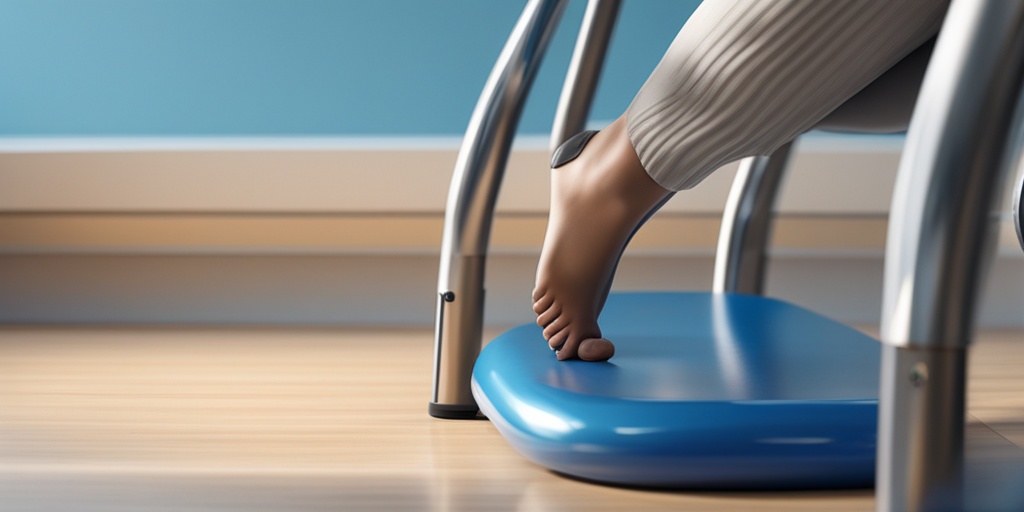
Understanding Stroke: Causes, Symptoms, and Treatment
A stroke occurs when the blood supply to the brain is interrupted, depriving the brain of oxygen and nutrients. This can cause damage to the brain tissue and lead to a range of physical and cognitive impairments. In this article, we will explore the causes, symptoms, and treatment options for stroke.
What are the Causes of Stroke?
There are several factors that can increase the risk of stroke, including:
What are the Symptoms of Stroke?
The symptoms of stroke can vary depending on the location and severity of the stroke. Common symptoms include:
- Numbness or weakness in the face, arm, or leg
- Confusion or trouble speaking or understanding speech
- Trouble seeing in one or both eyes
- Trouble walking, dizziness, or loss of balance
- Severe headache with no known cause
What is the Treatment for Stroke?
The treatment for stroke depends on the severity and location of the stroke. Treatment options may include:
- Medications to dissolve blood clots or reduce blood pressure
- Surgery to remove blood clots or repair damaged blood vessels
- Rehabilitation therapy to improve physical and cognitive function
Frequently Asked Questions
What are the Symptoms of Stroke in Women?
Women may experience different symptoms of stroke than men, including:
- Hiccups
- Pain or discomfort in the face, arm, or leg
- Sudden behavioral changes
- Sudden difficulty with speech or language
What is the Definition of Stroke?
A stroke is a medical condition that occurs when the blood supply to the brain is interrupted, depriving the brain of oxygen and nutrients.
What are the Causes of Stroke in Men?
The causes of stroke in men are similar to those in women, including high blood pressure, high cholesterol, and smoking.
What is the Treatment for Stroke in the Elderly?
The treatment for stroke in the elderly is similar to that in younger adults, including medications, surgery, and rehabilitation therapy.
What is the Recovery Process After a Stroke?
The recovery process after a stroke can vary depending on the severity and location of the stroke. Rehabilitation therapy, including physical, occupational, and speech therapy, can help improve physical and cognitive function.
What is the Importance of Stroke Awareness?
Stroke awareness is important because it can help individuals recognize the symptoms of stroke and seek medical attention quickly, reducing the risk of long-term damage and improving outcomes.
What is the Role of Statin Therapy After a Stroke?
Statin therapy may be prescribed after a stroke to help lower cholesterol levels and reduce the risk of future strokes.
What is the Importance of Physical Therapy After a Stroke?
Physical therapy is an important part of the recovery process after a stroke, helping to improve physical function and reduce the risk of future strokes.
What is the Difference Between a Stroke and a Heart Attack?
A stroke occurs when the blood supply to the brain is interrupted, while a heart attack occurs when the blood supply to the heart is interrupted.
What is the Importance of Stroke Prevention?
Stroke prevention is important because it can help reduce the risk of stroke and improve overall health and well-being.
What is the Role of Heat Stroke in Stroke Prevention?
Heat stroke can increase the risk of stroke, making it important to take precautions to prevent heat stroke, such as staying hydrated and staying cool in hot weather.
What is the Importance of Sunscreen in Stroke Prevention?
Wearing sunscreen can help reduce the risk of heat stroke, which can increase the risk of stroke.
What is the Role of Aphasia After a Stroke?
Aphasia is a common complication of stroke, affecting an individual’s ability to communicate.
What is the Importance of Post-Stroke Rehabilitation?
Post-stroke rehabilitation is important because it can help improve physical and cognitive function, reducing the risk of future strokes.
What is the Role of Statin Therapy in Stroke Prevention?
Statin therapy may be prescribed to help lower cholesterol levels and reduce the risk of stroke.
What is the Importance of Stroke Awareness Month?
Stroke awareness month is an important time to raise awareness about the risks and symptoms of stroke, and to promote stroke prevention and education.
What is the Role of Physical Therapy in Stroke Rehabilitation?
Physical therapy is an important part of stroke rehabilitation, helping to improve physical function and reduce the risk of future strokes.
What is the Importance of Immediate Post-Stroke Care?
Immediate post-stroke care is critical because it can help reduce the risk of long-term damage and improve outcomes.
What is the Role of Palette Knife Strokes in Art?
Palette knife strokes are a technique used in art to create thick, textured brushstrokes.
What is the Difference Between a 2-Stroke and 4-Stroke Engine?
A 2-stroke engine uses a mixture of gasoline and oil, while a 4-stroke engine uses a separate oil reservoir.
What is the Importance of Stroke Education?
Stroke education is important because it can help individuals recognize the symptoms of stroke and seek medical attention quickly, reducing the risk of long-term damage and improving outcomes.
What is the Role of Night-Time Heat in Stroke Risk?
Night-time heat can increase the risk of stroke, making it important to take precautions to stay cool and hydrated.
What is the Importance of Stroke Prevention in Women?
Stroke prevention is important in women because they are at a higher risk of stroke than men.
What is the Role of Camera Movement in Stroke Rehabilitation?
Camera movement can be used in stroke rehabilitation to help improve physical function and reduce the risk of future strokes.
What is the Importance of Stroke Awareness in Men?
Stroke awareness is important in men because they are at a higher risk of stroke than women.
What is the Role of Offset Stroke Paths in Graphic Design?
Offset stroke paths are a technique used in graphic design to create complex shapes and designs.
What is the Importance of Stroke Rehabilitation in the Elderly?
Stroke rehabilitation is important in the elderly because it can help improve physical and cognitive function, reducing the risk of future strokes.
What is the Role of Heat Stroke in Stroke Prevention?
Heat stroke can increase the risk of stroke, making it important to take precautions to prevent heat stroke, such as staying hydrated and staying cool in hot weather.
What is the Importance of Stroke Prevention in the Elderly?
Stroke prevention is important in the elderly because they are at a higher risk of stroke than younger adults.
What is the Role of Statin Therapy in Stroke Prevention?
Statin therapy may be prescribed to help lower cholesterol levels and reduce the risk of stroke.
What is the Importance of Stroke Awareness?
Stroke awareness is important because it can help individuals recognize the symptoms of stroke and seek medical attention quickly, reducing the risk of long-term damage and improving outcomes.
What is the Role of Physical Therapy in Stroke Rehabilitation?
Physical therapy is an important part of stroke rehabilitation, helping to improve physical function and reduce the risk of future strokes.
What is the Importance of Stroke Prevention?
Stroke prevention is important because it can help reduce the risk of stroke and improve overall health and well-being.
What is the Role of Heat Stroke in Stroke Prevention?
Heat stroke can increase the risk of stroke, making it important to take precautions to prevent heat stroke, such as staying hydrated and staying cool in hot weather.
What is the Importance of Stroke Awareness Month?
Stroke awareness month is an important time to raise awareness about the risks and symptoms of stroke, and to promote stroke prevention and education.
What is the Role of Palette Knife Strokes in Art?
Palette knife strokes are a technique used in art to create thick, textured brushstrokes.
What is the Difference Between a 2-Stroke and 4-Stroke Engine?
A 2-stroke engine uses a mixture of gasoline and oil, while a 4-stroke engine uses a separate oil reservoir.
What is the Importance of Stroke Education?
Stroke education is important because it can help individuals recognize the symptoms of stroke and seek medical attention quickly, reducing the risk of long-term damage and improving outcomes.
What is the Role of Night-Time Heat in Stroke Risk?
Night-time heat can increase the risk of stroke, making it important to take precautions to stay cool and hydrated.
What is the Importance of Stroke Prevention in Women?
Stroke prevention is important in women because they are at a higher risk of stroke than men.
What is the Role of Camera Movement in Stroke Rehabilitation?
Camera movement can be used in stroke rehabilitation to help improve physical function and reduce the risk of future strokes.
What is the Importance of Stroke Awareness in Men?
Stroke awareness is important in men because they are at a higher risk of stroke than women.
What is the Role of Offset Stroke Paths in Graphic Design?
Offset stroke paths are a technique used in graphic design to create complex shapes and designs.
What is the Importance of Stroke Rehabilitation in the Elderly?
Stroke rehabilitation is important in the elderly because it can help improve physical and cognitive function, reducing the risk of future strokes.
What is the Role of Heat Stroke in Stroke Prevention?
Heat stroke can increase the risk of stroke, making it important to take precautions to prevent heat stroke, such as staying hydrated and staying cool in hot weather.
What is the Importance of Stroke Prevention in the Elderly?
Stroke prevention is important in the elderly because they are at a higher risk of stroke than younger adults.
What is the Role of Statin Therapy in Stroke Prevention?
Statin therapy may be prescribed to help lower cholesterol levels and reduce the risk of stroke.
What is the Importance of Stroke Awareness?
Stroke awareness is important because it can help individuals recognize the symptoms of stroke and seek medical attention quickly, reducing the risk of long-term damage and improving outcomes.
What is the Role of Physical Therapy in Stroke Rehabilitation?
Physical therapy is an important part of stroke rehabilitation, helping to improve physical function and reduce the risk of future strokes.
What is the Importance of Stroke Prevention?
Stroke prevention is important because it can help reduce the risk of stroke and improve overall health and well-being.
What is the Role of Heat Stroke in Stroke Prevention?
Heat stroke can increase the risk of stroke, making it important to take precautions to prevent heat stroke, such as staying hydrated and staying cool in hot weather.
What is the Importance of Stroke Awareness Month?
Stroke awareness month is an important time to raise awareness about the risks and symptoms of stroke, and to promote stroke prevention and education.
What is the Role of Palette Knife Strokes in Art?
Palette knife strokes are a technique used in art to create thick, textured brushstrokes.
What is the Difference Between a 2-Stroke and 4-Stroke Engine?
A 2-stroke engine uses a mixture of gasoline and oil, while a 4-stroke engine uses a separate oil reservoir.
What is the Importance of Stroke Education?
Stroke education is important because it can help individuals recognize the symptoms of stroke and seek medical attention quickly, reducing the risk of long-term damage and improving outcomes.
What is the Role of Night-Time Heat in Stroke Risk?
Night-time heat can increase the risk of stroke, making it important to take precautions to stay cool and hydrated.
What is the Importance of Stroke Prevention in Women?
Stroke prevention is important in women because they are at a higher risk of stroke than men.
What is the Role of Camera Movement in Stroke Rehabilitation?
Camera movement can be used in stroke rehabilitation to help improve physical function and reduce the risk of future strokes.
What is the Importance of Stroke Awareness in Men?
Stroke awareness is important in men because they are at a higher risk of stroke than women.
What is the Role of Offset Stroke Paths in Graphic Design?
Offset stroke paths are a technique used in graphic design to create complex shapes and designs.
What is the Importance of Stroke Rehabilitation in the Elderly?
Stroke rehabilitation is important in the elderly because it can help improve physical and cognitive function, reducing the risk of future strokes.
What is the Role of Heat Stroke in Stroke Prevention?
Heat stroke can increase the risk of stroke, making it important to take precautions to prevent heat stroke, such as staying hydrated and staying cool in hot weather.
What is the Importance of Stroke Prevention in the Elderly?
Stroke prevention is important in the elderly because they are at a higher risk of stroke than younger adults.
What is the Role of Statin Therapy in Stroke Prevention?
Statin therapy may be prescribed to help lower cholesterol levels and reduce the risk of stroke.
What is the Importance of Stroke Awareness?
Stroke awareness is important because it can help individuals recognize the symptoms of stroke and seek medical attention quickly, reducing the risk of long-term damage and improving outcomes.
What is the Role of Physical Therapy in Stroke Rehabilitation?
Physical therapy is an important part of stroke rehabilitation, helping to improve physical function and reduce the risk of future strokes.
What is the Importance of Stroke Prevention?
Stroke prevention is important because it can help reduce the risk of stroke and improve overall health and well-being.
What is the Role of Heat Stroke in Stroke Prevention?
Heat stroke can increase the risk of stroke, making it important to take precautions to prevent heat stroke, such as staying hydrated and staying cool in hot weather.
What is the Importance of Stroke Awareness Month?
Stroke awareness month is an important time to raise awareness about the risks and symptoms of stroke, and to promote stroke prevention and education.
What is the Role of Palette Knife Strokes in Art?
Palette knife strokes are a technique used in art to create thick, textured brushstrokes.
What is the Difference Between a 2-Stroke and 4-Stroke Engine?
A 2-stroke engine uses a mixture of gasoline and oil, while a 4-stroke engine uses a separate oil reservoir.
What is the Importance of Stroke Education?
Stroke education is important because it can help individuals recognize the symptoms of stroke and seek medical attention quickly, reducing the risk of long-term damage and improving outcomes.
What is the Role of Night-Time Heat in Stroke Risk?
Night-time heat can increase the risk of stroke, making it important to take precautions to stay cool and hydrated.
What is the Importance of Stroke Prevention in Women?
Stroke prevention is important in women because they are at a higher risk of stroke than men.
What is the Role of Camera Movement in Stroke Rehabilitation?
Camera movement can be used in stroke rehabilitation to help improve physical function and reduce the risk of future strokes.
What is the Importance of Stroke Awareness in Men?
Stroke awareness is important in men because they are at a higher risk of stroke than women.
What is the Role of Offset Stroke Paths in Graphic Design?
Offset stroke paths are a technique used in graphic design to create complex shapes and designs.
What is the Importance of Stroke Rehabilitation in the Elderly?
Stroke rehabilitation is important in the elderly because it can help improve physical and cognitive function, reducing the risk of future strokes.
What is the Role of Heat Stroke in Stroke Prevention?
Heat stroke can increase the risk of stroke, making it important to take precautions to prevent heat stroke, such as staying hydrated and staying cool in hot weather.
What is the Importance of Stroke Prevention in the Elderly?
Stroke prevention is important in the elderly because they are at a higher risk of stroke than younger adults.
What is the Role of Statin Therapy in Stroke Prevention?
Statin therapy may be prescribed to help lower cholesterol levels and reduce the risk of stroke.
What is the Importance of Stroke Awareness?
Stroke awareness is important because it can help individuals recognize the symptoms of stroke and seek medical attention quickly, reducing the risk of long-term damage and improving outcomes.
What is the Role of Physical Therapy in Stroke Rehabilitation?
Physical therapy is an important part of stroke rehabilitation, helping to improve physical function and reduce the risk of future strokes.
What is the Importance of Stroke Prevention?
Stroke prevention is important because it can help reduce the risk of stroke and improve overall health and well-being.
What is the Role of Heat Stroke in Stroke Prevention?
Heat stroke can increase the risk of stroke, making it important to take precautions to prevent heat stroke, such as staying hydrated and staying cool in hot weather.
What is the Importance of Stroke Awareness Month?
Stroke awareness month is an important time to raise awareness about the risks and symptoms of stroke, and to promote stroke prevention and education.
What is the Role of Palette Knife Strokes in Art?
Palette knife strokes are a technique used in art to create thick, textured brushstrokes.
What is the Difference Between a 2-Stroke and 4-Stroke Engine?
A 2-stroke engine uses a mixture of gasoline and oil, while a 4-stroke engine uses a separate oil reservoir.
What is the Importance of Stroke Education?
Stroke education is important because it can help individuals recognize the symptoms of stroke and seek medical attention quickly, reducing the risk of long-term damage and improving outcomes.
What is the Role of Night-Time Heat in Stroke Risk?
Night-time heat can increase the risk of stroke, making it important to take precautions to stay cool and hydrated.
What is the Importance of Stroke Prevention in Women?
Stroke prevention is important in women because they are at a higher risk of stroke than men.
What is the Role of Camera Movement in Stroke Rehabilitation?
Camera movement can be used in stroke rehabilitation to help improve physical function and reduce the risk of future strokes.
What is the Importance of Stroke Awareness in Men?
Stroke awareness is important in men because they are at a higher risk of stroke than women.
What is the Role of Offset Stroke Paths in Graphic Design?
Offset stroke paths are a technique used in graphic design to create complex shapes and designs.
What is the Importance of Stroke Rehabilitation in the Elderly?
Stroke rehabilitation is important in the elderly because it can help improve physical and cognitive function, reducing the risk of future strokes.
What is the Role of Heat Stroke in Stroke Prevention?
Heat stroke can increase the risk of stroke, making it important to take precautions to prevent heat stroke, such as staying hydrated and staying cool in hot weather.
What is the Importance of Stroke Prevention in the Elderly?
Stroke prevention is important in the elderly because they are at a higher risk of stroke than younger adults.
What is the Role of Statin Therapy in Stroke Prevention?
Statin therapy may be prescribed to help lower cholesterol levels and reduce the risk of stroke.
What is the Importance of Stroke Awareness?
Stroke awareness is important because it can help individuals recognize the symptoms of stroke and seek medical attention quickly, reducing the risk of long-term damage and improving outcomes.
What is the Role of Physical Therapy in Stroke Rehabilitation?
Physical therapy is an important part of stroke rehabilitation, helping to improve physical function and reduce the risk of future strokes.
What is the Importance of Stroke Prevention?
Stroke prevention is important because it can help reduce the risk of stroke and improve overall health and well-being.
What is the Role of Heat Stroke in Stroke Prevention?
Heat stroke can increase the risk of stroke, making it important to take precautions to prevent heat stroke, such as staying hydrated and staying cool in hot weather.
What is the Importance of Stroke Awareness Month?
Stroke awareness month is an important time to raise awareness about the risks and symptoms of stroke, and to promote stroke prevention and education.
What is the Role of Palette Knife Strokes in Art?
Palette knife strokes are a technique used in art to create thick, textured brushstrokes.
What is the Difference Between a 2-Stroke and 4-Stroke Engine?
A 2-stroke engine uses a mixture of gasoline and oil, while a 4-stroke engine uses a separate oil reservoir.
What is the Importance of Stroke Education?
Stroke education is important because it can help individuals recognize the symptoms of stroke and seek medical attention quickly, reducing the risk of long-term damage and improving outcomes.
What is the Role of Night-Time Heat in Stroke Risk?
Night-time heat can increase the risk of stroke, making it important to take precautions to stay cool and hydrated.
What is the Importance of Stroke Prevention in Women?
Stroke prevention is important in women because they are at a higher risk of stroke than men.
What is the Role of Camera Movement in Stroke Rehabilitation?
Camera movement can be used in stroke rehabilitation to help improve physical function and reduce the risk of future strokes.
What is the Importance of Stroke Awareness in Men?
Stroke awareness is important in men because they are at a higher risk of stroke than women.
What is the Role of Offset Stroke Paths in Graphic Design?
Offset stroke paths are a technique used in graphic design to create complex shapes and designs.
What is the Importance of Stroke Rehabilitation in the Elderly?
Stroke rehabilitation is important in the elderly because it can help improve physical and cognitive function, reducing the risk of future strokes.
What is the Role of Heat Stroke in Stroke Prevention?
Heat stroke can increase the risk of stroke, making it important to take precautions to prevent heat stroke, such as staying hydrated and staying cool in hot weather.
What is the Importance of Stroke Prevention in the Elderly?
Stroke prevention is important in the elderly because they are at a higher risk of stroke than younger adults.
What is the Role of Statin Therapy in Stroke Prevention?
Statin therapy may be prescribed to help lower cholesterol levels and reduce the risk of stroke.
What is the Importance of Stroke Awareness?
Stroke awareness is important because it can help individuals recognize the symptoms of stroke and seek medical attention quickly, reducing the risk of long-term damage and improving outcomes.
What is the Role of Physical Therapy in Stroke Rehabilitation?
Physical therapy is an important part of stroke rehabilitation, helping to improve physical function and reduce the risk of future strokes.
What is the Importance of Stroke Prevention?
Stroke prevention is important because it can help reduce the risk of stroke and improve overall health and well-being.
What is the Role of Heat Stroke in Stroke Prevention?
Heat stroke can increase the risk of stroke, making it important to take precautions to prevent heat stroke, such as staying hydrated and staying cool in hot weather.
What is the Importance of Stroke Awareness Month?
Stroke awareness month is an important time to raise awareness about the risks and symptoms of stroke, and to promote stroke prevention and education.
What is the Role of Palette Knife Strokes in Art?
Palette knife strokes are a technique used in art to create thick, textured brushstrokes.
What is the Difference Between a 2-Stroke and 4-Stroke Engine?
A 2-stroke engine uses a mixture of gasoline and oil, while a 4-stroke engine uses a separate oil reservoir.
What is the Importance of Stroke Education?
Stroke education is important because it can help individuals recognize the symptoms of stroke and seek medical attention quickly, reducing the risk of long-term damage and improving outcomes.
What is the Role of Night-Time Heat in Stroke Risk?
Night-time heat can increase the risk of stroke, making it important to take precautions to stay cool and hydrated.
What is the Importance of Stroke Prevention in Women?
Stroke prevention is important in women because they are at a higher risk of stroke than men.
What is the Role of Camera Movement in Stroke Rehabilitation?
Camera movement can be used in stroke rehabilitation to help improve physical function and reduce the risk of future strokes.
What is the Importance of Stroke Awareness in Men?
Stroke awareness is important in men because they are at a higher risk of stroke than women.
What is the Role of Offset Stroke Paths in Graphic Design?
Offset stroke paths are a technique used in graphic design to create complex shapes and designs.
What is the Importance of Stroke Rehabilitation in the Elderly?
Stroke rehabilitation is important in the elderly because it can help improve physical and cognitive function, reducing the risk of future strokes.
What is the Role of Heat Stroke in Stroke Prevention?
Heat stroke can increase the risk of stroke, making it important to take precautions to prevent heat stroke, such as staying hydrated and staying cool in hot weather.
What is the Importance of Stroke Prevention in the Elderly?
Stroke prevention is important in the elderly because they are at a higher risk of stroke than younger adults.
What is the Role of Statin Therapy in Stroke Prevention?
Statin therapy may be prescribed to help lower cholesterol levels and reduce the risk of stroke.
What is the Importance of Stroke Awareness?
Stroke awareness is important because it can help individuals recognize the symptoms of stroke and seek medical attention quickly, reducing the risk of long-term damage and improving outcomes.
What is the Role of Physical Therapy in Stroke Rehabilitation?
Physical therapy is an important part of stroke rehabilitation, helping to improve physical function and reduce the risk of future strokes.
What is the Importance of Stroke Prevention?
Stroke prevention is important because it can help reduce the risk of stroke and improve overall health and well-being.
What is the Role of Heat Stroke in Stroke Prevention?
Heat stroke can increase the risk of stroke, making it important to take precautions to prevent heat stroke, such as staying hydrated and staying cool in hot weather.
What is the Importance of Stroke Awareness Month?
Stroke awareness month is an important time to raise awareness about the risks and symptoms of stroke, and to promote stroke prevention and education.
What is the Role of Palette Knife Strokes in Art?
Palette knife strokes are a technique used in art to create thick, textured brushstrokes.
What is the Difference Between a 2-Stroke and 4-Stroke Engine?
A 2-stroke engine uses a mixture of gasoline and oil, while a 4-stroke engine uses a separate oil reservoir.
What is the Importance of Stroke Education?
Stroke education is important because it can help individuals recognize the symptoms of stroke and seek medical attention quickly, reducing the risk of long-term damage and improving outcomes.
What is the Role of Night-Time Heat in Stroke Risk?
Night-time heat can increase the risk of stroke, making it important to take precautions to stay cool and hydrated.
What is the Importance of Stroke Prevention in Women?
Stroke prevention is important in women because they are at a higher risk of stroke than men.
What is the Role of Camera Movement in Stroke Rehabilitation?
Camera movement can be used in stroke rehabilitation to help improve physical function and reduce the risk of future strokes.
What is the Importance of Stroke Awareness in Men?
Stroke awareness is important in men because they are at a higher risk of stroke than women.
What is the Role of Offset Stroke Paths in Graphic Design?
Offset stroke paths are a technique used in graphic design to create complex shapes and designs.
What is the Importance of Stroke Rehabilitation in the Elderly?
Stroke rehabilitation is important in the elderly because it can help improve physical and cognitive function, reducing the risk of future strokes.
What is the Role of Heat Stroke in Stroke Prevention?
Heat stroke can increase the risk of stroke, making it important to take precautions to prevent heat stroke, such as staying hydrated and staying cool in hot weather.
What is the Importance of Stroke Prevention in the Elderly?
Stroke prevention is important in the elderly because they are at a higher risk of stroke than younger adults.
What is the Role of Statin Therapy in Stroke Prevention?
Statin therapy may be prescribed to help lower cholesterol levels and reduce the risk of stroke.
What is the Importance of Stroke Awareness?
Stroke awareness is important because it can help individuals recognize the symptoms of stroke and seek medical attention quickly, reducing the risk of long-term damage and improving outcomes.
What is the Role of Physical Therapy in Stroke Rehabilitation?
Physical therapy is an important part of stroke rehabilitation, helping to improve physical function and reduce the risk of future strokes.
What is the Importance of Stroke Prevention?
Stroke prevention is important because it can help reduce the risk of stroke and improve overall health and well-being.
What is the Role of Heat Stroke in Stroke Prevention?
Heat stroke can increase the risk of stroke, making it important to take precautions to prevent heat stroke, such as staying hydrated and staying cool in hot weather.
What is the Importance of Stroke Awareness Month?
Stroke awareness month is an important time to raise awareness about the risks and symptoms of stroke, and to promote stroke prevention and education.
What is the Role of Palette Knife Strokes in Art?
Palette knife strokes are a technique used in art to create thick, textured brushstrokes.
What is the Difference Between a 2-Stroke and 4-Stroke Engine?
A 2-stroke engine uses a mixture of gasoline and oil, while a 4-stroke engine uses a separate oil reservoir.
What is the Importance of Stroke Education?
Stroke education is important because it can help individuals recognize the symptoms of stroke and seek medical attention quickly, reducing the risk of long-term damage and improving outcomes.
What is the Role of Night-Time Heat in Stroke Risk?
Night-time heat can increase the risk of stroke, making it important to take precautions to stay cool and hydrated.
What is the Importance of Stroke Prevention in Women?
Stroke prevention is important in women because they are at a higher risk of stroke than men.
What is the Role of Camera Movement in Stroke Rehabilitation?
Camera movement can be used in stroke rehabilitation to help improve physical function and reduce the risk of future strokes.
What is the Importance of Stroke Awareness in Men?
Stroke awareness is important in men because they are at a higher risk of stroke than women.
What is the Role of Offset Stroke Paths in Graphic Design?
Offset stroke paths are a technique used in graphic design to create complex shapes and designs.
What is the Importance of Stroke Rehabilitation in the Elderly?
Stroke rehabilitation is important in the elderly because it can help improve physical and cognitive function, reducing the risk of future strokes.
What is the Role of Heat Stroke in Stroke Prevention?
Heat stroke can increase the risk of stroke, making it important to take precautions to prevent heat stroke, such as staying hydrated and staying cool in hot weather.

